We use cookies to improve your experience. By accepting you agree to our cookie policy
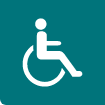

2019 UPDATE
Since the Q & A blog Dr Cooney from Calmare NJ has now also kindly written a Calmare Therapy Update blog giving us details of Clinical Trials and news that has happened with Calmare Therapy since last year. He has also included a CRPS sufferer’s experience of Calmare Therapy. After reading the Calmare Therapy Q & A session, why not have a read of the latest CALMARE THERAPY UPDATE blog or the Helping Children and Teens with CRPS using Calmare Therapy?!
Thank you Dr Cooney for taking the time to answer all the questions from the Burning Nights CRPS Support followers!
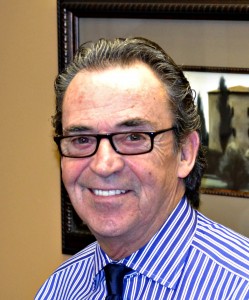
Calmare CRPS RSD Q & A – Dr. Michael J. Cooney (Permission Granted for Reproduction)
We introduced this technology in our New Jersey (NJ) USA practice in 2011 to help treatment-resistant patients. But, to our surprise, people from as far away as Australia and South Africa with CRPS soon travelled to our small clinic for this therapy.
Soon after launching scrambler therapy, we were contacted by some patients in the Midwest with RSD who had trekked from coast-to-coast looking for pain relief. They had tried Ketamine treatments, spinal cord stimulators, nerve blocks, surgery−you name it. And none of them helped to lessen their pain or other physical symptoms. These were young women who had their whole lives ahead of them; they families refused to just give up finding a solution.
They found us and came to NJ for treatment, particularly since the scrambler doesn’t have any side effects and it’s a (virtually) painless process.
We completed the 10-treatment regimen, and their outcomes were life-changing. These early patients were really the catalysts that helped establish us as specialists in this therapy for CRPS and RSD. Today, Amanda and Laura are strong proponents of Calmare and will talk about its merits to anyone who will listen!
Believe me, after treating people living with chronic pain for 30 years, I can appreciate a CRPS warrior’s skepticism about a “new treatment” to “cure the pain.”
Lastly, I’d like to state this is not a “miracle cure” and it does not work for every patient, unfortunately. After the fourth or fifth treatment, if there is no significant reduction in pain, it may not be a viable treatment solution. With this said, fortunately, about 80 to 85 percent of CRPS patients have achieved substantial relief of pain and symptoms starting as soon as the first or second treatment.
For me personally, bringing Calmare to our practice has been one of the most personally satisfying efforts I have had the privilege to be part of in my 30-year career.
Dr. M. Cooney
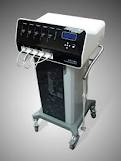
Q: How many CRPS/RSD patients do you deal with for Calmare Therapy?
A: Since we started treating CRPS / RSD patients in 2011, we have treated nearly 500 patients from 15 countries.
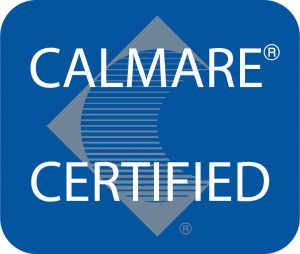
Q: Is there any real time frame for its availability in other countries like Australia and the UK?
A: I am one provider based in New Jersey, USA so unfortunately I can’t speak to the availability of this technology worldwide. I’ve treated patients from about 15 different countries so far which leads me to believe it’s fairly limited in availability—at least right now.
Q: Are we talking CRPS Type 1 or Type 2 or both?
A: In my practice, I’ve seen highly successful outcomes in both types of CRPS. In addition, we have great outcomes overcoming pain and physical symptoms from shingles (PHN), diabetic neuropathy and neuropathy as a result of chemotherapy treatment (CIPN). There was recently a patient with severe burns who experienced great pain relief from scrambler therapy (he was not my patient.)
Q: Does Calmare Pain Therapy need to be repeated on a regular basis for CRPS?
A: It depends on the patient and a few key factors:
A: Most patients need TEN (10) daily (Monday-Friday) 45-minute treatment sessions, although some need a few more (particularly if they have been suffering for several years) or fewer, should the condition be more recently diagnosed.
There are typically no side effects and in most cases, pain relief is substantial or even eliminated. Subsequent booster treatments may be needed down the line (typically 1 to 3 treatments) should the pain condition return. I recently blogged about what happens during each scrambler therapy treatment here.
Some patients need to come for booster treatments yearly, a few more often, and some never need to return for additional therapy.
A: Depending on the severity of the condition, some patients add one or two extra treatments as “insurance” prior to their trek home. Over time, if the pain level returns, some patients come back for 1-3 boosters. The time span between the need for booster treatments is longer with continuing booster treatments.
Q: Does Calmare Pain Therapy need to be repeated on a regular basis for CRPS?
A: It depends on the patient and a few key factors: severity of the condition; length of time the patient has been living with CRPS; other existing medical conditions; and if the patient follows post-treatment care instructions. Some patients need to come for booster treatments yearly, a few more often, and some never need to return for additional therapy.
A: It uses a biophysical (using physical methods to treat biological problems) rather than a biochemical (drugs) approach. The device works to relieve pain directly at the pain site without any reliance on medication. Via small electrodes, a ‘no-pain’ message is transmitted directly to the nerve for a period of 30 – 45 minutes, on average.
During the treatment process, the patient’s pain steadily decreases to allow the patient to participate in normal daily activities and resume a better quality of life. In some cases, pain relief has been reported in as few as one to three treatments, but each patient’s case is unique and some patients experience relief after 5-7 treatments.
There is no pain during the therapy and no side effects.
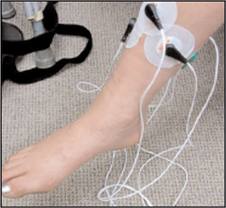
The system uses a multiprocessor to synthesize 16 types of nerve action potentials that are similar to endogenous nerve action potentials. It strings these potentials into sequences and delivers electrical stimulation to the affected region. By mimicking endogenous action potentials, the device is able to “scramble” or modify abnormal pain signalling into non-pain information. The charge used in scrambler therapy is low, the waveform is constantly changing through 16 different algorithms, and the electrical current is below the threshold that causes pain.
In comparison, electrical stimulation administered by a transcutaneous electrical nerve stimulation (TENS) device blocks pain signals after they are transmitted by sensitized nerves and has a much higher charge with a simple biphasic wave. Other chronic pain therapies, such as spinal cord stimulation and intraspinal drug delivery systems, involve invasive and expensive technology with the possibility of serious complications.
A: To my knowledge, I am one of the first Calmare providers to treat CRPS sufferers. I have shared my findings and outcomes with some of the key pain management research hospitals here in the U.S. and found them to be receptive to the consistent outcomes we have seen using this treatment. It is up to them at this juncture to decide if they will engage in their own studies specific to CRPS.
So long as the clinical trial providers place the leads in the optimal positions on each trial participant’s body in accordance with their original injury site, the results should be both outstanding and irrefutable.
To date, there have been several clinical studies on the scrambler to date including Mayo Clinic, Massey Cancer Institute, Virginia Commonwealth and other research institutions. We try to keep this information up-to-date on our CLINICAL TRIALS WEB PAGE
N.B. – If you look at the FDA Government trials database under Calmare Therapy you may not find any trials due to the fact that Calmare is a brand name and trials are done under the term ‘Scrambler Therapy.’ Under this you will currently find 7 trials either recruiting, completed or active but not recruiting.
This is the direct link for the clinical trials – USA Government, Clinical Trials SCRAMBLER THERAPY. Available from: <https://clinicaltrials.gov/ct2/results?>term=scrambler+therapy>
A: Speaking specifically to my practice alone and referring to CRPS patient cases, we have seen a success rate of 75% to 80% (percent.) “Success rate” means that the level of chronic pain and other physical symptoms of CRPS have been substantially decreased−or eliminated.
A: Physicians are scientists who depend on scientific data as proof of success. I can certainly appreciate that. Right now, Johns Hopkins University is engaged in the first significant (large) double-blind study that I am aware of. They are using the scrambler machine and a “sham” machine. I believe they are also using a TENS unit as a third treatment resource.
Keep in mind, here in U.S., the scrambler machine has been awarded a patent from the U.S. Patent and Trademark Office which identifies the device as a unique entity unlike anything else in the market (i.e. a TENS unit)
In regard to comparing the MC-5A scrambler machine to a tens unit, the two devices have marked differences:
A:We don’t currently accept insurance but will help our patients with documentation support for their reimbursement efforts. It goes without saying that if medical insurance accepted our treatment, so many more people could be helped. We are hopeful that medical insurance companies will eventually understand that the cost of scrambler therapy is markedly less expensive than invasive in-patient procedures and long-term use of prescription medications.
A: I do not advise scrambler therapy if you have this condition. Calmare is also not suitable if you:
Be sure to discuss any and all other medical conditions you have, and medications you are using, with your Calmare treatment provider before treatment begins.

Thank You for all your Questions & Answers regarding Calmare Pain Therapy
Thank You Dr Cooney for all your hard work and time that you have taken to answer all the questions sent in by several Burning Nights followers!
Thank you also to those of you who asked questions about Calmare Pain Therapy Treatment and I hope that Dr Cooney has answered all your questions in as much detail as was possible.
If anyone would like to find out more about Calmare Pain Therapy for CRPS/RSD or chronic pain, the details for Calmare Pain Therapy Treatment New Jersey:
W: CALMARE PAIN THERAPY TREATMENT NJ (www.calmaretheapynj.com)
Email: calmarenj@gmail.com
Office Address: 323 Union Avenue, Rutherford, New Jersey 07070
Check out the other Calmare Therapy for CRPS articles:
Written: 25/04/2015
Last Updated: 01/07/2019
We use cookies to improve your experience. By accepting you agree to our cookie policy
 £
£